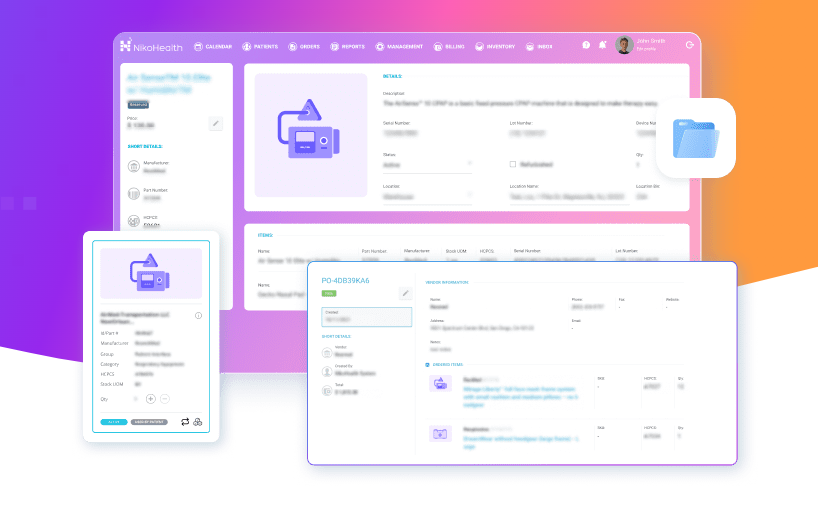The healthcare industry is undergoing a massive transformation, with technology playing a central role in reshaping how organizations manage their operations, finances, and patient care. Among the many areas of innovation, HME billing software stands out as a critical tool for providers of Home Medical Equipment (HME) and Durable Medical Equipment (DME). These providers face unique challenges, including complex billing processes, regulatory compliance, and the need for seamless integration with other healthcare systems.
As the industry evolves, billing software designed for HME and DME providers is also adapting, becoming more sophisticated, user-friendly, and integrated with emerging technologies. This article explores the future of HME billing solutions, highlighting the key trends that are shaping the industry and driving innovation.
1. The Growing Importance of Automation
One of the most significant trends in the future of HME billing software is the rapid adoption of automation. Billing in the HME sector is often complicated due to strict payer requirements, frequent audits, and detailed documentation needs. Manual processes not only slow down reimbursements but also increase the likelihood of errors.
Automation is helping to solve these issues by:
- Reducing errors in claim submissions with automated data validation.
- Streamlining workflows, such as claim scrubbing, coding, and submission.
- Enhancing compliance by automatically updating payer rules and requirements.
- Improving staff efficiency, allowing billing teams to focus on exceptions rather than repetitive tasks.
In the future, automation will extend further, incorporating advanced AI-driven features to predict denials before submission and recommend corrective actions.
2. Integration with Electronic Health Records (EHRs)
Another key development is the integration of HME billing software with Electronic Health Records (EHR) and practice management systems. Providers increasingly demand seamless data exchange to minimize duplicate entry and ensure accuracy.
This trend is driven by:
- Improved interoperability standards across healthcare IT systems.
- Value-based care models, where accurate and timely data is essential.
- Patient-centric care coordination, requiring billing data to connect with clinical workflows.
In the future, these integrations will be more seamless, creating a unified ecosystem where patient records, equipment orders, billing details, and insurance authorizations flow automatically across systems.
3. Artificial Intelligence and Predictive Analytics
Artificial Intelligence (AI) is rapidly becoming a game-changer in healthcare technology, and HME billing software is no exception. AI-driven tools can analyze large volumes of billing data to identify trends, predict claim denials, and recommend corrective actions before submission.
For example:
- Predictive analytics can forecast reimbursement delays based on payer history.
- Machine learning algorithms can highlight patterns of underpayments or recurring errors.
- AI-powered assistants can guide billing staff in real time, reducing training needs and boosting productivity.
Looking ahead, AI will not only optimize billing processes but also provide actionable insights into revenue cycle performance, helping HME providers make data-driven decisions.
4. Cloud-Based Solutions and Remote Accessibility
Cloud technology has revolutionized healthcare IT, and its impact on billing solutions continues to grow. Cloud-based HME billing software offers numerous advantages over traditional on-premises systems:
- Scalability: Providers can easily add new users, locations, or features without major infrastructure investments.
- Remote accessibility: Staff can securely access billing data from any location, supporting remote and hybrid work models.
- Lower costs: Cloud platforms reduce the need for expensive hardware and IT maintenance.
- Enhanced security: Leading vendors invest heavily in data encryption, multi-factor authentication, and compliance safeguards.
The future will see even greater reliance on the cloud, with mobile-first interfaces enabling billing staff and managers to handle key tasks from smartphones or tablets.
5. Patient-Centric Billing Experience
In addition to streamlining provider operations, the future of HME billing software will focus more on patient experience. Patients are increasingly demanding transparency, flexibility, and convenience in their healthcare interactions, including billing and payments.
Emerging features include:
- Self-service patient portals for viewing bills, making payments, and setting up payment plans.
- Automated reminders via text or email to reduce missed payments.
- Flexible payment options, including credit cards, ACH, and digital wallets.
- Clear billing communication that avoids confusing medical jargon.
By improving the billing experience, providers not only enhance patient satisfaction but also reduce the risk of unpaid balances.
6. Compliance and Regulatory Adaptability
The healthcare billing environment is highly regulated, with frequent changes in payer policies, Medicare and Medicaid rules, and industry standards. HME billing software must evolve to keep pace with these updates, ensuring providers remain compliant while minimizing administrative burdens.
Future-ready systems will feature:
- Real-time compliance updates pushed automatically by vendors.
- Built-in audit tools to prepare for payer reviews.
- Customizable reporting to meet specific regulatory requirements.
As compliance demands grow more complex, automation and AI will play a larger role in monitoring transactions and flagging potential compliance issues before they become costly problems.
7. Data-Driven Decision Making
Modern HME providers are not just service providers—they are also data-driven organizations. The future of billing solutions lies in advanced analytics and reporting tools that empower decision-makers with real-time insights.
Examples of valuable analytics include:
- Cash flow forecasting to anticipate revenue trends.
- Denial management reports to pinpoint recurring issues.
- Performance dashboards that track KPIs like days in accounts receivable or claim turnaround times.
By leveraging analytics, providers can shift from reactive problem-solving to proactive revenue cycle management, ensuring financial stability and growth.
8. Cybersecurity as a Priority
With billing software handling sensitive patient and financial data, cybersecurity is becoming a top concern. Cyberattacks targeting healthcare organizations are on the rise, making data protection a non-negotiable priority.
Future HME billing software solutions will emphasize:
- Advanced encryption protocols for data at rest and in transit.
- Regular vulnerability assessments and penetration testing.
- AI-driven threat detection to identify unusual patterns.
- Zero-trust security frameworks that minimize access risks.
Vendors who demonstrate strong security practices will have a competitive edge, as providers seek peace of mind regarding their data integrity.
9. Customization and Scalability
Every HME provider operates differently, depending on size, specialization, and patient demographics. The future of billing software lies in flexibility—systems that can be customized to fit unique workflows while also scaling as the business grows.
Providers will increasingly look for:
- Configurable workflows tailored to their billing processes.
- Scalable platforms that grow with the organization.
- Modular features that allow providers to pay only for what they need.
This adaptability ensures that both small independent providers and large enterprise organizations can benefit from the same core solution, adjusted to their requirements.
10. Collaboration with Medical Equipment Management Systems
Finally, the future of HME billing software will be deeply connected with medical equipment management systems. Since billing in this sector is directly tied to equipment rentals, purchases, and inventory, integration with equipment tracking platforms will be essential.
Such integration will:
- Ensure accurate billing linked to actual equipment usage.
- Minimize lost revenue from untracked rentals or returns.
- Improve operational efficiency by connecting billing with inventory data.
This holistic approach to billing and equipment management will streamline processes and maximize revenue integrity.
Conclusion
The future of HME billing software is being shaped by powerful trends—automation, AI, cloud technology, integration, and patient-centered design. These innovations are not just about reducing administrative burdens; they are transforming how providers operate, interact with patients, and ensure financial stability in a highly competitive and regulated market.
By embracing these trends, HME and DME providers can position themselves for long-term success, ensuring they remain compliant, efficient, and responsive to both payer requirements and patient expectations.
The next generation of billing solutions will not only process claims but also provide actionable insights, protect sensitive data, and integrate seamlessly with broader healthcare ecosystems. Ultimately, the providers who adopt these advancements will be best equipped to thrive in the evolving healthcare landscape.

